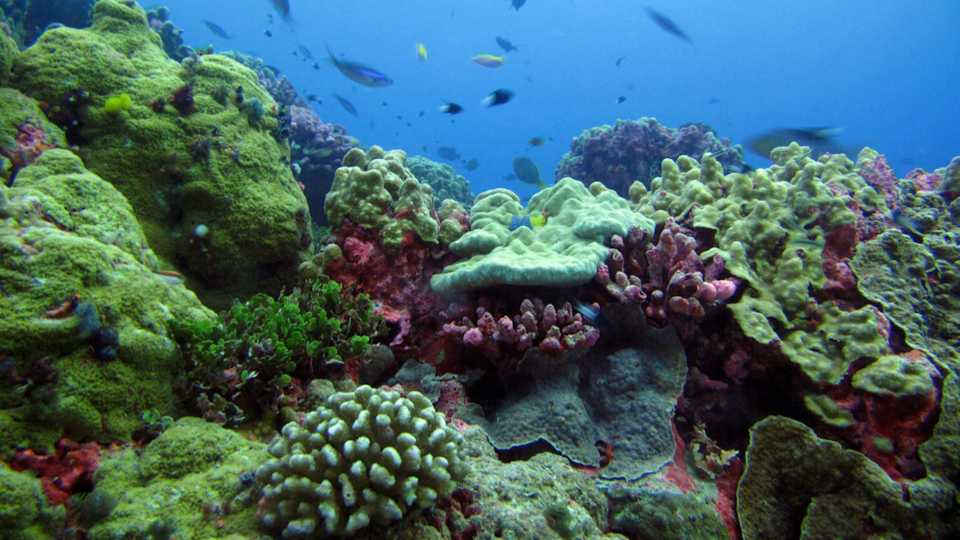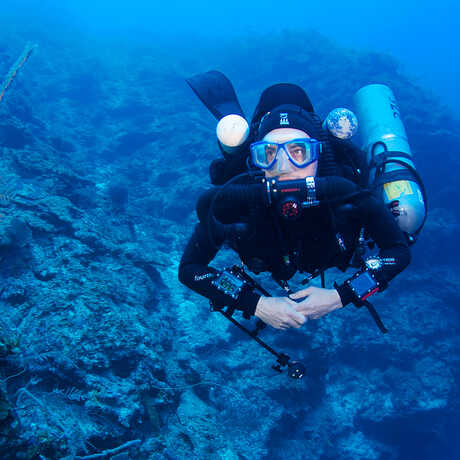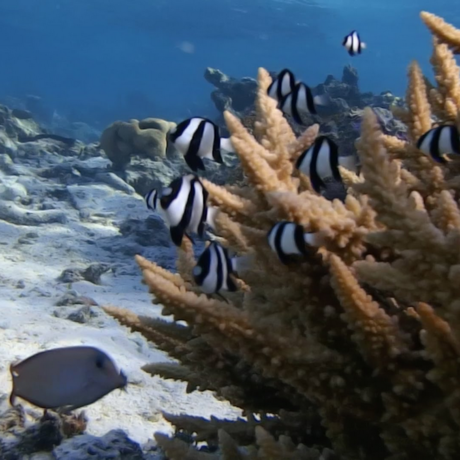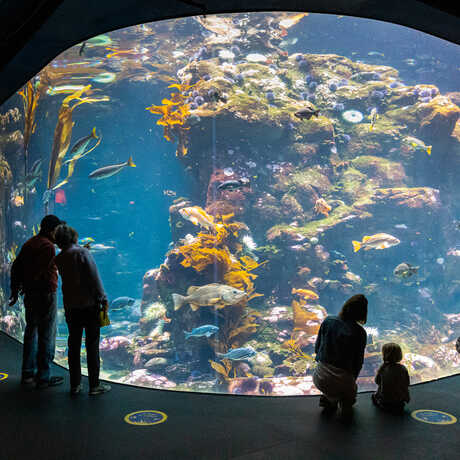Science News
Corals and Climate Change, Part 1

Today and Thursday, we’re examining climate change and coral reefs. Two scientists recently visited the Academy to discuss this topic from two different angles—Simon Donner is a climate scientist at the University of British Columbia and Steve Palumbi is a biologist at Stanford. Both study how warmer temperatures affect these invertebrates, and today, we’re covering Donner’s studies.
Why the focus on corals? According to Donner’s website, coral reefs are “the most biologically diverse marine ecosystems on the planet. Millions of people in the developing countries depend on coral reefs every day, for shoreline protection, for food, and for income.”
Donner studies the effects of climate change on many different aspects of life—such as land use and water—and he wants to understand how organisms vary in their sensitivity to climate change. In fact, coral reefs are very sensitive. The corals that Donner studies, in the islands of Kiribati (pronounced kiribas) in the equatorial Pacific, are on the front lines of climate change. “Kiribati happens to be right in the heart of the El Niño zone. That means the Kiribati coral reefs there experience more frequent ‘heat waves’ than other reefs in the tropics.”
El Niños bring naturally occurring heat waves, and Donner and his colleagues want to understand how reefs respond to these warming events. “We want to know what a reef that can survive climate change looks like,” he says.
In the ten years that his team has been working in Kiribati, they have seen several mass bleaching events. Coral bleaching occurs when the water becomes so warm, the corals release their algal symbionts. Photosynthetic algae feed corals and give corals their color. In return, the corals provide shelter for the algae. Corals can survive a bleaching event and recover, depending on conditions, and, as Donner and his team are finding, the species of coral.
So far, their findings provide both good and bad news, Donner says. These coral reefs do seem to survive heat stress better than others. But these reefs tend to be dominated by “weedy corals,” as Donner describes them. “Coral reefs are diverse habitats, but if they are dominated by weedy corals, there’s low coral diversity, which could mean low diversity of other life there.”
Getting a full picture will take some time, he says. “The Kiribati coral research is old-fashioned natural history: the goal is to track how the coral reefs are changing over time in response to the climate and other pressures. It takes patience. The evidence so far confirms the original hypothesis that the ocean’s frequent heat waves make the reefs more resilient to heat stress. This seems to be happening through the dominance of a few weedy species, but we need a few more years of data to say for sure.
“I suspect that the persistence of corals with a weedy life history strategy in a place prone to heat waves is a sign of the future,” he continues. “In Kiribati, the species in question happens to be Porites rus, but elsewhere it may be another species. Though we need more data to really confirm the hypothesis, the possibility raises some questions about marine conservation strategies. Do we focus on the aesthetically appealing locations with little past heat stress experience, or these tough but less diverse reefs?”
While Donner has been studying these reefs for ten years already, he suspects it will take awhile longer to answer this question. “In that time, I also hope to raise enough donations to train and support local people to conduct and lead the surveys themselves.”
In the meantime, Donner is also busy on another very noble, and useful, pursuit. “I’m actually working—slowly, I should add—on a book that takes a broad look at why climate change is such a confusing subject. It leaves behind the politics of today and focuses on root causes.”
Image: Randi Rotjan, New England Aquarium


